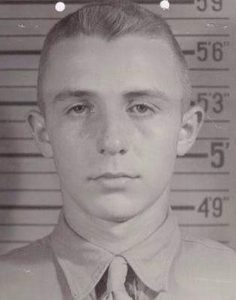Joseph Aime Roberts, age 17, from Massachusetts, Bristol county.
Service era: Korea
Date of death: Thursday, November 2, 1950
Death details: During the last week of October 1950, Republic of Korea (ROK) Army forces under the control of the U.S. Eighth Army were advancing deep in North Korean territory, approaching the Yalu River on the Chinese-Korean border. Chinese Communist Forces (CCF) struck back in a surprise attack, engaging the ROK 1st and 6th Divisions near Unsan, some sixty miles north of Pyongyang. The U.S. 1st Cavalry Division, with the 8th Cavalry Regiment in the lead, was rushed forward to reinforce the ROK units in the Unsan area. On November 1, the regiment’s 1st Battalion took up positions north of Unsan, while the 2nd Battalion moved to guard the Nammyon River valley west of town, and the 3rd Battalion was placed in reserve at the valley’s southern end. Corporal Joseph Aime Roberts, who joined the U.S. Army from Massachusetts, was a member of Company I, 3rd Battalion, 8th Cavalry Regiment, 1st Cavalry Division. By midnight on November 1, 1950, the 8th Cavalry Regiment was forced to withdraw from the Unsan area to avoid encirclement by the enemy. The 3rd Battalion was the last to withdraw, and was surrounded and cut off by the CCF. They formed a defensive perimeter and withstood enemy attacks for the next few days before survivors either broke out to avoid capture or surrendered. Corporal Roberts went missing in action during this battle. He was never reported as a prisoner of war, and he remains unaccounted for. Today, Corporal Roberts is memorialized on the Courts of the Missing at the National Memorial Cemetery of the Pacific.
Source: National Archives, Defense POW/MIA Accounting Agency

